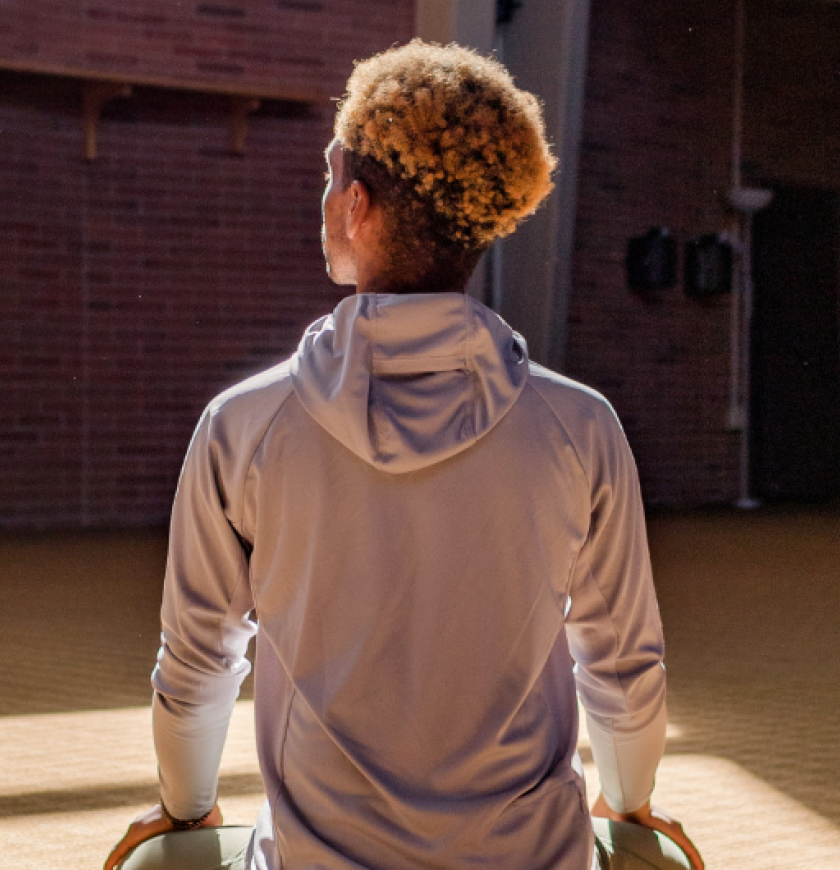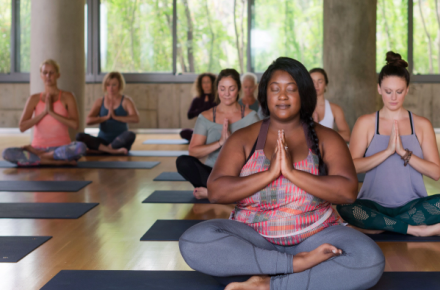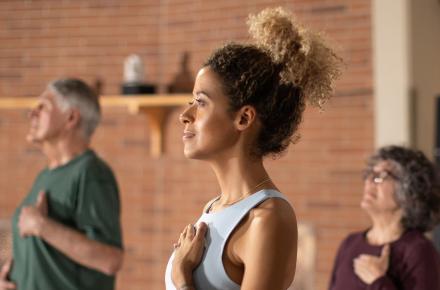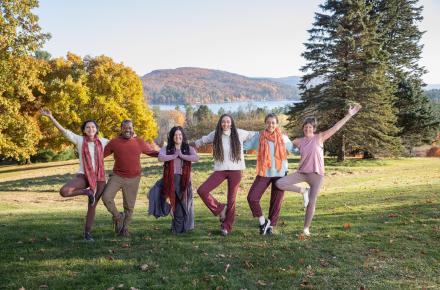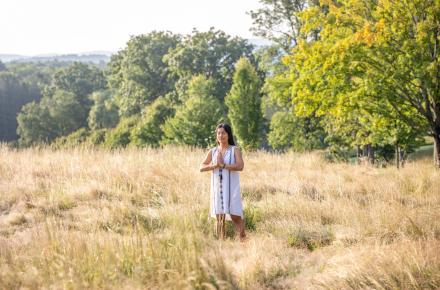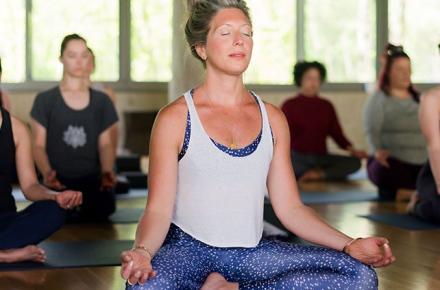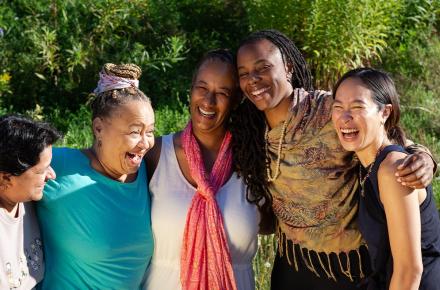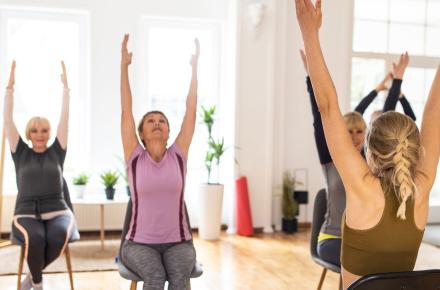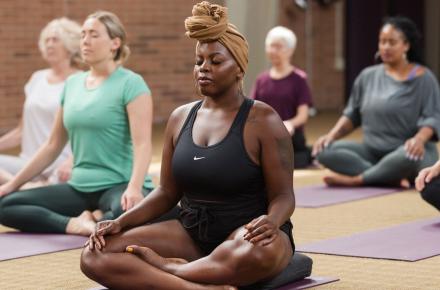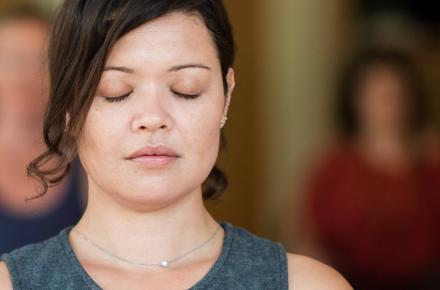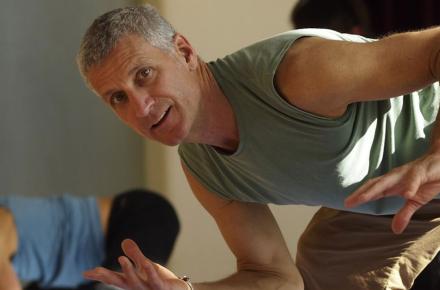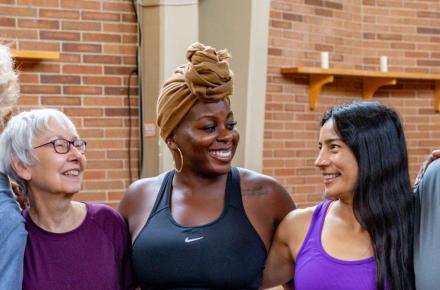On the Mat and Out of Your Comfort Zone: The Benefits of Practicing Advanced Asana

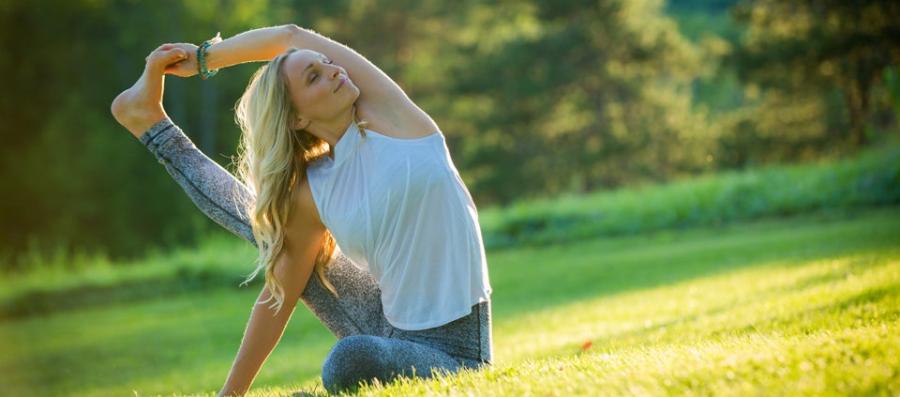
Yoga teaches that each time we do yet another Downward Dog, or Warrior I, or Triangle, our presence in and awareness of the moment make it all new again. So what do we gain when we move out of those familiar postures and experiment with asanas in which we don’t feel nearly as comfortable or confident? Yoganand Michael Carroll, Senior Faculty of the Kripalu School of Yoga, offers seven reasons to explore your edge—whether you’re a teacher, a student, or both.
1. Expand your repertoire. For the most part, there are no clear demarcations between “basic” postures and “advanced” postures. At Kripalu, our 300-hour modules focusing on advanced asana introduce postures that could just as well have been included in the 200-hour training, but there wasn’t enough time to include them. For the core curriculum, we chose postures that are simplest to teach, that work for most people, and that have the most tangible effects as far as strengthening and increasing extension. But there are many other postures that are accessible and exciting for students at a variety of levels.
2. Continue the process. If you only ever practiced 10 or 20 postures, you would still reap the benefits of yoga. That said, if we don’t expose ourselves to more unfamiliar postures, and just stay with what’s easy and manageable, that can limit our experience of yoga. Yoga is a developmental process—you practice, build your strength and flexibility, and eventually grow into more complex postures. Advanced postures are great to introduce if you teach the same group of students week after week, and can gradually prepare them for more advanced practice.
3. Reach new places. Some stretches are unique to a particular posture—there’s a place between my shoulder blades that I can only get to by practicing Yoga Mudra, and there’s another I can only get to by doing Rabbit. There are more places in the body to activate and stretch than we can reach with a couple dozen postures. When I teach advanced asana, students often have “aha” moments. I hear things like, “I feel my shoulders in a way I never felt them before.”
4. Cultivate body awareness. Advanced postures are great for cultivating body awareness. When you’re moving into a posture you’re not familiar with, it’s very important to stay connected with what you’re experiencing in order to avoid injury. As you enter the posture incrementally, ask yourself: Is this appropriate for me? Am I stretched out enough? Do I need to do more developmental work before I can safely practice this posture? If you’re balancing and you’re not entirely stable, notice how long you’re able to balance before you fall, and notice what happens right before you fall.
5. Remember “beginner’s mind.” When you teach yoga, it’s easy to become less of a practitioner. Advanced asanas are wonderful tools for putting you back into the student experience. They require patience, self-acceptance, and acknowledgment of your limitations. In the modules I teach on advanced asana, students almost always find several postures that they will never be able to do. My 13-year-old niece can go right into Full Lotus, but I know a yoga teacher who has been practicing for 30 years and can’t do Full Lotus because her knees don’t allow it. In the 400-posture training I took in India, there were many postures I couldn’t practice, because my body just didn’t do that, and that’s okay.
6. Preserve the history. As yoga has become more mainstream and fitness-based, many of the ancient practices have been lost or fallen out of favor. Reintroducing lesser-known postures preserves the biodiversity of yoga, so to speak. When we lose a practice or technique, we lose a fraction of the yoga tradition. Expanding our range as far as methodology, as well as philosophy, opens the door to a deeper and fuller understanding of the many facets of yoga.
7. Experience mastery. We often focus on the healing aspects of yoga, but there is also the empowerment aspect. Working with advanced asanas offers an experience of mastery, of growth and evolution, of vitality and accomplishment—the feeling that comes when we transcend ourselves, when we find ourselves doing something we couldn’t do before.
© Kripalu Center for Yoga & Health. All rights reserved. To request permission to reprint, please e-mail editor@kripalu.org.

